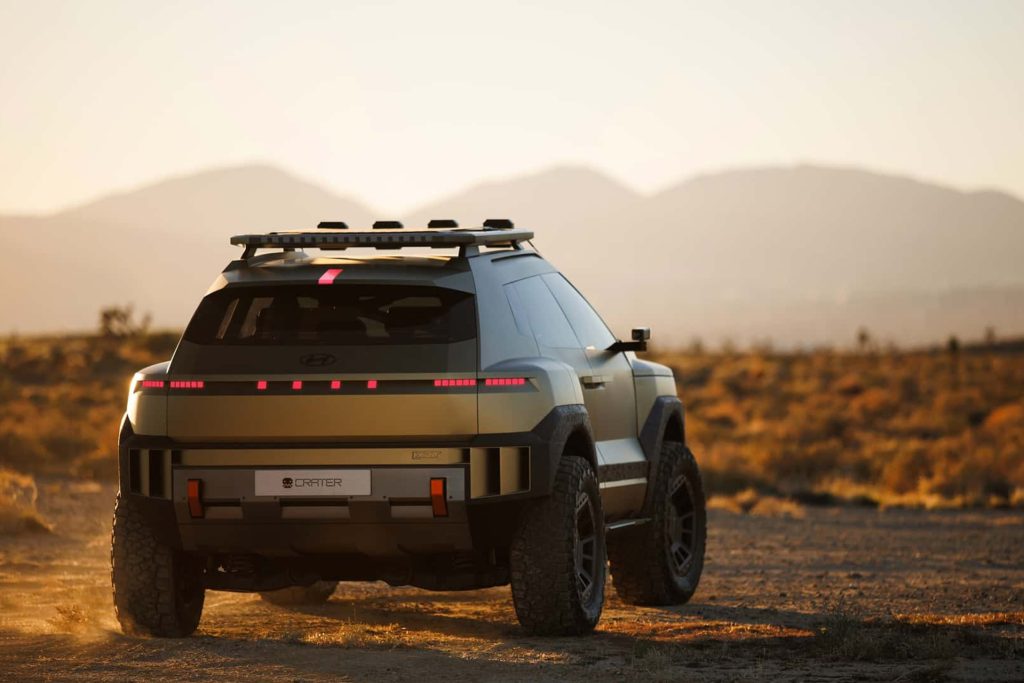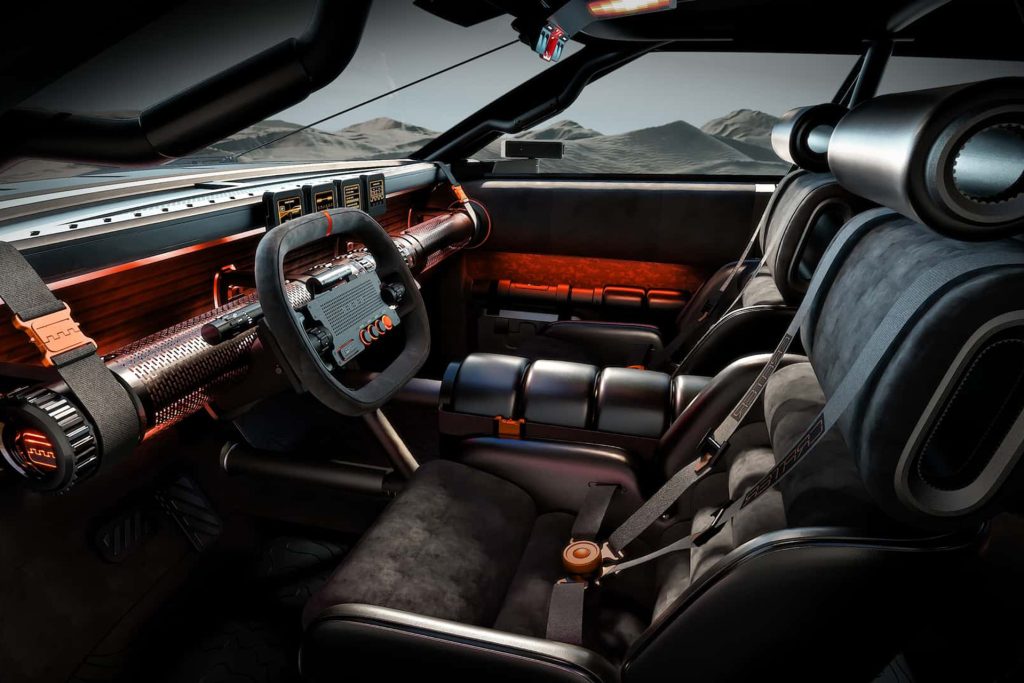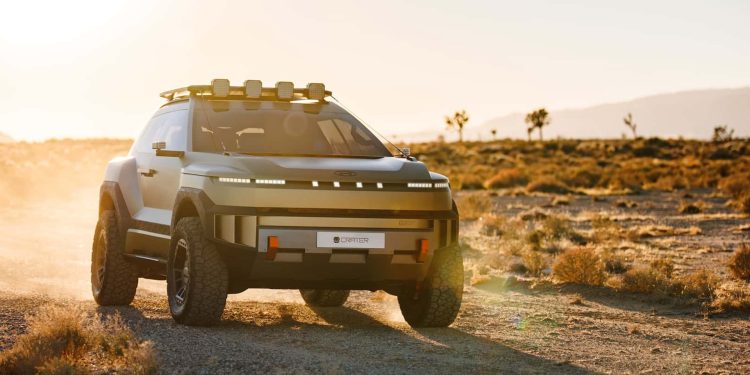Hyundai Crater Concept previews hardcore XRT off-roader
Hyundai has pulled the covers off one of its boldest SUV concepts yet, unveiling the rugged new Crater; a hardcore off-roader created under the brand’s increasingly adventurous XRT sub-label. And unlike many far-fetched show cars, this one looks like it’s being lined up for the real world.

Unveiled inside Hyundai’s XRT-only design workshop in Southern California, the Crater is a dramatic showcase of where the Korean brand wants to take its off-road ambitions. The studio is kitted out with climbing holds, mountain-biking gear and tyres up to 44 inches tall which is a not-so-subtle hint that Hyundai intends XRT to evolve far beyond aesthetic “rugged packs”.
A compact SUV with big attitude
While its stance suggests something the size of a Land Cruiser, Hyundai says the Crater is actually a compact SUV, roughly the same length as the Ioniq 5. Its aggressive proportions come from a long wheelbase, flared bodywork and massive 35-inch tyres that taper sharply up to a flat roof rack.

The Crater introduces Hyundai’s new “Art of Steel” design philosophy, which uses extreme panel stamping to create deep creases, angular surfaces and dramatic body lines. The result is an SUV that looks part sci-fi landing craft, part Dakar racer. It’s an evolution of the pixel-themed design already seen on the Ioniq range.
Lighting continues that pixel theme; the headlights, tail-lights, roof auxiliaries and even the side-mirror camera pods carry the signature square-LED pattern. Those mirror pods also detach and become handheld torches, because of course they do.

Meet “Crater Man”
Hyundai’s designers clearly had fun with the details. The orange-anodised front recovery point hides a small Easter egg: a stylised skull dubbed “Crater Man”, complete with jagged teeth that double as a bottle opener.
Inside, the Crater Man motif repeats across the cabin seen in the door hinges, nylon-strap buckles, and door-pull tabs. These touches contrast with the interior’s otherwise soft, rounded shapes, developed by Hyundai’s Korean studio to counterbalance the exterior’s sharp geometry.

A back-to-basics cabin (with a few wild ideas)
In a surprising twist, the Crater rejects the giant touchscreen trend. Instead of a dominating central display, Hyundai has fitted four small, detachable control panels, each able to handle functions or even run games.
The brand hints at a “bring-your-own-device” philosophy, where your smartphone attaches magnetically to the dash instead of the car relying on a built-in interface. But don’t mistake it for low-tech as the concept has a full-width head-up display, plus a pixel message board in the steering wheel.

Air-con and drivetrain controls are proudly analogue, using toggle switches and defined physical buttons. Hyundai says this is about building muscle memory, keeping drivers focused on the trail rather than buried in menus.
EV? Hybrid? Petrol? Hyundai isn’t saying
The Crater can move under its own power using its electric motors, but Hyundai won’t say what’s actually underneath the bonnet or even whether that bonnet hides a frunk or an engine. Artificial engine noises (similar to those on the Ioniq 6 N) add another layer of ambiguity.

This vagueness likely reflects Hyundai’s current flexibility around future powertrains. The brand has recently softened its all-electric timelines, so a production Crater could feasibly go EV, hybrid or even full combustion depending on where the market lands.
Built for adventure, not a single discipline
Hyundai says the Crater isn’t a desert racer, rock crawler or overlander specifically. Instead, it’s designed as a general-purpose adventure rig, something like a Korean rival to the Wrangler, Bronco or Rivian R1S. Considering Hyundai’s track record of turning wild concepts into production reality (see the Ioniq 5 and new Tucson), a toned-down but recognisable version seems very possible.

If that happens, expect the showroom model to lose some of the more extreme styling flourishes. But if the Crater is the starting point, Hyundai’s first serious off-road SUV could be one of the most distinctive newcomers in years.
For now, it remains a concept but it’s a clear signal that Hyundai wants to play in the hardcore 4×4 space.






